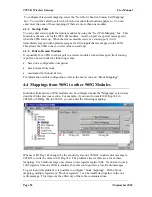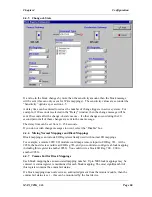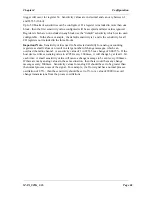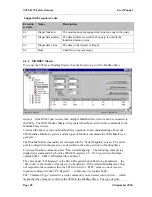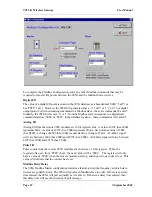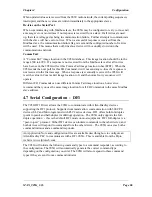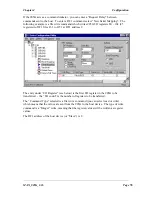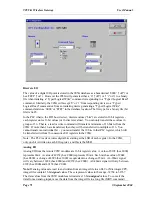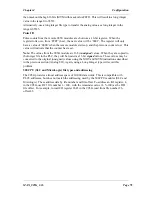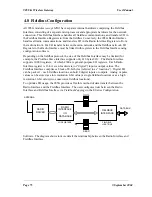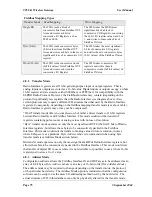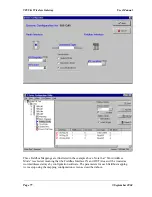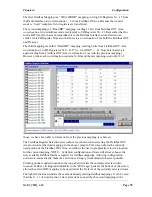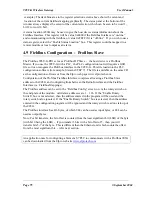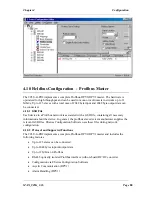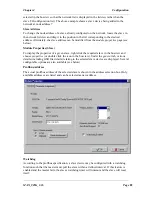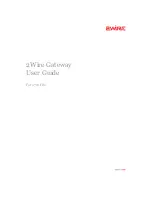
905U-G Wireless Gateway
User Manual
Page 67
©September 2004
To complete the Fieldbus Configuration, enter any other Modbus commands that may be
required to transfer I/O points between the 905G and the Modbus Slave devices.
Digital I/O
The value of a digital I/O point is stored in the 905G database as a hexadecimal '0000' (“off”) or
hex 'FFFF' (“on”). However the 905G will generate either a ‘0’ (“off”) or ‘1’ (“on”) to a digital
output point (Coil) when sending commands to a Modbus slave - these are commands 05 and 15.
Similarly, the 905G will accept ‘0’ or ‘1’ from the Modbus slave in response to a digital read
command and store ‘0000’ or ‘FFFF’ in the database location - these commands are 01 and 02.
Analog I/O
Analog I/O from the remote 905U modules are 16 bit register value. A value of 8192 (hex 2000)
represents 0mA. A value of 49152 (hex C000) represents 20mA. Each mA has value of 2048
(hex 0800) - a change of 4096 (hex 1000) is equivalent to a change of 2mA. A 4-20mA signal
will vary between 16384 (hex 4000) and 49152 (hex C000). A 0-20mA signal will vary between
8192 (hex 2000) and 49152 (hex C000).
Pulse I/O
Pulse counts from the remote 905U modules are shown as a 16-bit register. When the
register rolls over, from ‘FFFF’ (hex), the next value will be ‘0001’. The register will only
have a value of ‘0000’ when the remote module starts up, and the previous count is lost. This
value will indicate that the counter has reset.
Modbus Retry Delay
The 905G Modbus Master configuration includes a feature to limit the frequency at which slave
devices are polled for data. The 905G will poll each Modbus slave in order. If there is no delay
time entered, the 905G will poll as quickly as it is able to. If there is a delay time entered, then
this delay time will occur between each poll message.

